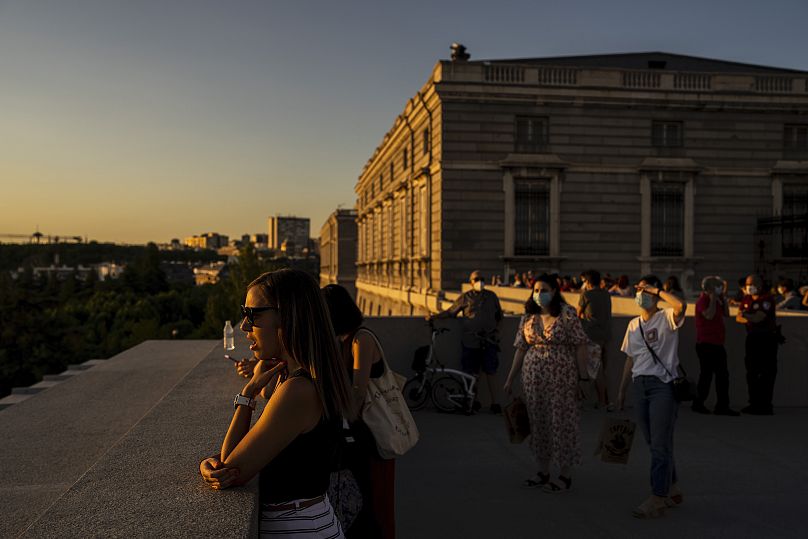We're on the ground at the FITUR tourism fair in Spain, hearing about the industry's recovery plans amid efforts to go greener.
FITUR, Spain’s premier travel fair kicked off this week, returning to full capacity after moving partly online in 2021 due to the pandemic. One of the largest travel trade events in Europe, this year’s conference sees nearly 7,000 companies representing 107 countries split over IFEMA’s 10 conference halls.
“It is not our top score but it is very high participation for this situation,” says FITUR Director, Maria Valcarce, of the 2022 turnout. It’s almost 80 per cent of what we had in our best edition so we are very happy to be able to celebrate this year.”
How is Europe's second biggest travel fair going ahead?
Running for five days from 19 - 23 January, the Madrid fair attracts a global audience and is the leading trade event for Latin American countries. This year has been particularly challenging, with the Spanish government imposing strict COVID-19 protocols in December 2021, including making face masks mandatory outdoors.
“Here in IFEMA we have a special system for the ventilation of the hall. We change all the air within the hall three times per hour, so it’s very similar to being outside. And also we have control of the movement of the people - we know how many people we have in each hall, how people move and we also have a system of alerts to prevent people coming too close,” says Valcarce.
An FPP2 mask and proof of vaccination are required to enter IFEMA, while foreign nationals must also show their Spain Travel Health Pass (SpTH), which is required to travel on flights to the country. But these strict measures haven’t stopped people attending.
“Yesterday, on our first day, we had 28,000 people coming and we hope we are going to be around 70,000 something. We shall see.”
What are the travel headlines so far?
The fair is supporting the reemergence of the tourism sector after the global pandemic, and many countries are keen to prove they are safe for international tourists.
Other key travel trends are emerging too, explains Valcarce, “I think in general the industry is making its digital transition and that’s what we can see in the different conferences and debates that we have in the different spaces dedicated to content in the show.
“They are talking a lot about that, and also about ecological transition, sustainability in general.”
Another significant trend emerging across the sector, but particularly in countries which may have suffered from over-tourism pre-pandemic, is the desire for more ‘quality’ tourists, something Valcarce confirms: “I think in general the Spanish sector is working towards increasing the quality of the tourists that we receive, in the sense of their capacity for spending.
“We are the second country in the world in the number of visitors that we receive from abroad, and nowadays we are looking for less people but higher incomes.”
This sentiment was echoed in December by Thailand, a country whose ecosystem has suffered badly in the past due to uncontrolled mass tourism. Particularly in popular destinations such as Maya Bay, featured in the film The Beach.
How popular countries will be able to reduce traveller numbers remains to be seen, but it is clearly something that many wish to do as we move towards a post-pandemic world.












